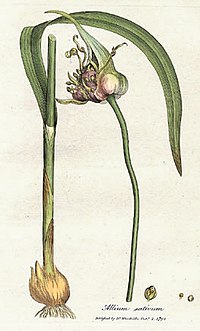
Photo from wikipedia
Gas chromatography-olfactometry revealed thirty-two odour-active compounds in a heat-processed tomato-onion puree, among which twenty-seven were identified by gas chromatography-olfactometry-mass spectrometry (GC-O-MS) and comprehensive two-dimensional gas chromatography coupled with time-of-flight mass… Click to show full abstract
Gas chromatography-olfactometry revealed thirty-two odour-active compounds in a heat-processed tomato-onion puree, among which twenty-seven were identified by gas chromatography-olfactometry-mass spectrometry (GC-O-MS) and comprehensive two-dimensional gas chromatography coupled with time-of-flight mass spectrometry (GC×GC-TOF MS). Based on the results of two olfactometric methods, i.e. detection frequency and aroma extract dilution analysis, the most potent aroma components include: dipropyl disulfide, S-propyl thioacetate, dimethyl trisulfide, 1-octen-3-one, methional, dipropyl trisulfide, 4,5-dimethylthiazole, 2-phenylacetaldehyde and sotolone. Processing of mixed vegetable systems can add complexity in their aroma profiles due to (bio)chemical interactions between the components. Therefore, the impact of different processing steps (i.e. thermal blanching, all-in-one and split-stream processes) on the volatile profile and aroma of a mixed tomato-onion puree has been investigated using a GC-MS fingerprinting approach. Results showed the potential to control the aroma in a mixed tomato-onion system through process-induced enzymatic modulations for producing tomato-onion food products with distinct aroma characteristics.
Journal Title: Food chemistry
Year Published: 2017
Link to full text (if available)
Share on Social Media: Sign Up to like & get
recommendations!